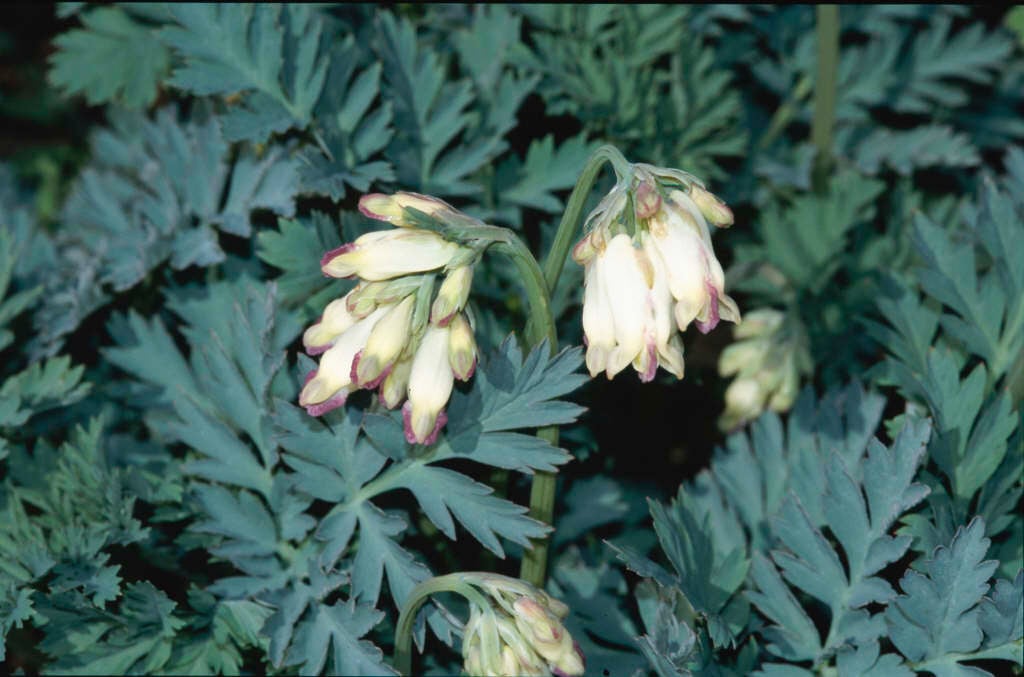Dicentra formosa 'Langtrees'
bleeding heart 'Langtrees'
'Langtrees' is a spreading perennial to 30cm tall, with finely divided, vividly glaucous leaves and arching sprays of pink-flushed creamy-white flowers in late spring and early summer

Buy this plant
Size
Ultimate height
0.1–0.5 metresTime to ultimate height
2–5 yearsUltimate spread
0.1–0.5 metresGrowing conditions
Moisture
Moist but well–drained, Poorly–drainedpH
Alkaline, NeutralColour & scent
| Stem | Flower | Foliage | Fruit | |
| Spring | Pink White | Blue Green | ||
|---|---|---|---|---|
| Summer | Pink White | Blue Green | ||
| Autumn | ||||
| Winter |
Position
- Partial shade
Aspect
East–facing or North–facing or West–facing
Exposure
Sheltered Hardiness
H5Botanical details
- Family
- Papaveraceae
- Native to GB / Ireland
- No
- Foliage
- Deciduous
- Habit
- Bushy
- Potentially harmful
- All parts cause stomach ache if ingested, the foliage may aggravate skin allergies. Wear gloves and other protective equipment when handling
- Genus
Dicentra can be rhizomatous or tuberous perennials with attractively divided leaves and pendent, heart-shaped flowers, usually in arching panicles or racemes
- Name status
Accepted
How to grow
Cultivation
Grow in moist, fertile, humus-rich soil, preferably neutral or slightly alkaline; site in partial shade although will tolerate sun if the soil is moist
Propagation
Propagate by division in early spring or after the leaves have died down
Suggested planting locations and garden types
- City and courtyard gardens
- Coastal
- Cottage and informal garden
- Flower borders and beds
- Banks and slopes
- Garden edging
- Underplanting of roses and shrubs
Pruning
No pruning required
Pests
Generally pest-free
Diseases
Generally disease-free
Get involved
The Royal Horticultural Society is the UK’s leading gardening charity. We aim to enrich everyone’s life through plants, and make the UK a greener and more beautiful place.